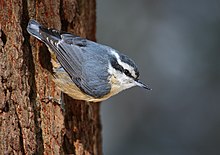Siberian Pines
This year I decided it was time to grow some pine nut trees. But there is a challenge involved in growing these delicious nuts in the North. The pine nuts we know that are used in things like pesto, do not grow in our climate and is more suited to the Mediterranean and North Africa.But there are alternatives, and they all happen to be very close relatives of White Pine. For example the Swiss Stone Pine, the Korean Pine, and the Siberian Pine.
I decided on the Siberian pine (Pinus Sibirica) or Russian Cedar for a number of reasons.
Firstly, their native habitat is the boreal forest (called the taiga) and so both the climate, soil, and ecosystem is very close to Northern Ontario.
Secondly, these trees produce thin shelled pine nuts which makes them easier to process.
And finally, Pinus Sibirica seeds are easier to germinate than the notoriously difficult Korean Pine.
But before I get into my experience raising these trees, let me explain why I think they are a great addition to a Northern permaculture landscape.
These trees are big. Like 100 ft tall at maturity big. Not a lot of trees around here do that, and so they will likely make great shelter barriers from the cold winter winds; creating small warm micro-climates in the landscape.
The Economics
These trees live for about 800 years although the typical forest age currently is around 400 years.Each tree produces on average 5 Kg of pine nuts every year (up to 10 Kg in a mast year).
At the current price of $75 per Kg, a tree can produce an annual income of $350 per tree once you factor in squirrels, "processing slippage", and the odd bad year.
Now consider a shelter belt of 100 trees and let the math sink in. That is a $35,000 per year income for maybe 1 month worth of work harvesting and processing. Every year for 500 years (Allowing for old age retirement, tree losses due to disease, fire and natural attrition).
That is an income lasting half a dozen lifetimes, or a dozen generations. Such a shelter belt would have the potential to generate $17.5 million in pine nuts alone. Not to mention the other benefits these trees have in the ecosystem.
OK enough of the boring numbers. Needless to say, these trees pay the bills.
The tree is seriously hardy. It even grows in permafrost. And its resin doesn't crystallize quickly as common pines do. In its native land, this resin is a natural resource useful for many different applications that I won't go into here.
The Nuts n' Bolts
Pine nuts are generally ready for harvest about 10 days before the green cones begin to open. And in the case of Pinus Sibirica, the cones never actually open which makes determining ripeness difficult.In its native habitat there is a bird called a spotted nutcracker is responsible for extracting the nuts from the cone and dispersing them. The spotted nutcracker doesn't live in North America, but the Clarke's nutcracker does. It may be a good indicator species for nut ripeness but alas, they don't range into Northern Ontario.
This little guy is a Red Breasted Nuthatch, and they do migrate into Northern Ontario. They also happen to be great eaters of conifer seeds. Maybe, just maybe a flock of these descending upon your pine nut trees to feast could be subtle sign that it's time to harvest.

Another possible indicator bird is the Pine Grosbeak.
The cones are harvested with either long poles (often bamboo), long-handled pruners, or long-handled saws which knock the cones down.
The harvested cones are placed in a breathable bag and then exposed to heat / left in a sunny, sheltered position for 3 weeks. The drying process causes the cone to fully ripen, and at this point they can be broken apart to extract the seeds. This is generally done with a mechanical threshing machine to save time and labor.
Now I'm wondering if these little guys might be eager workers we can recruit to harvest the pine cones. They naturally chew through pine cone stems to detach them from the tree. They then collect the fallen pine cones and stash them away in a safe spot for future use.
It will be an interesting experiment to see if they will harvest and store pine cones if they are provided with a convenient storage space, and the cones they collect are replaced with another food source, like peanuts in the shell.




No comments:
Post a Comment